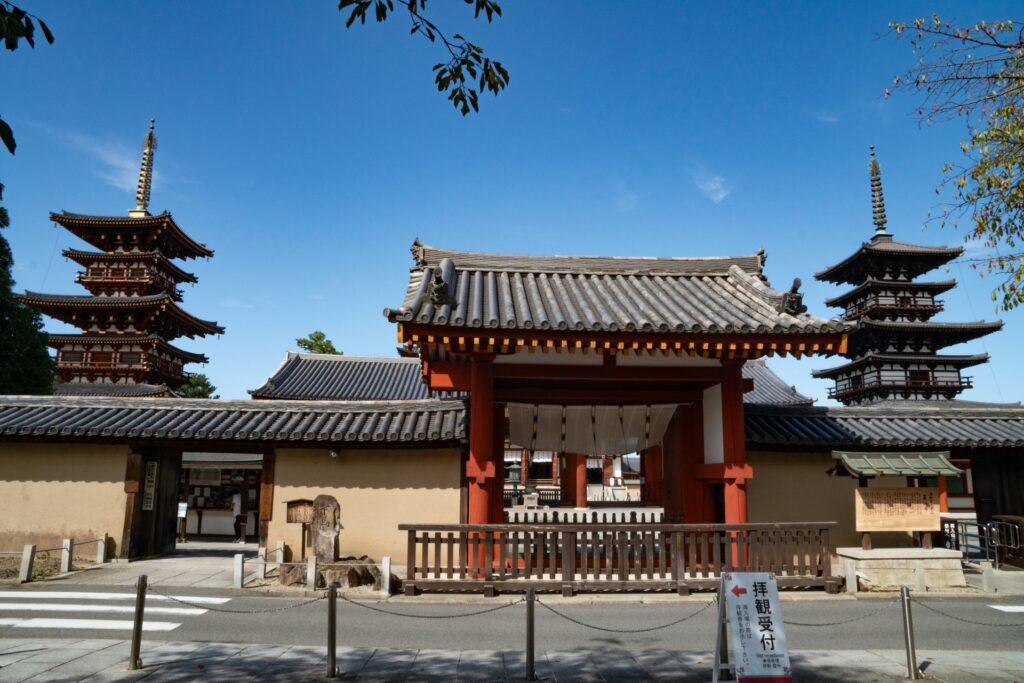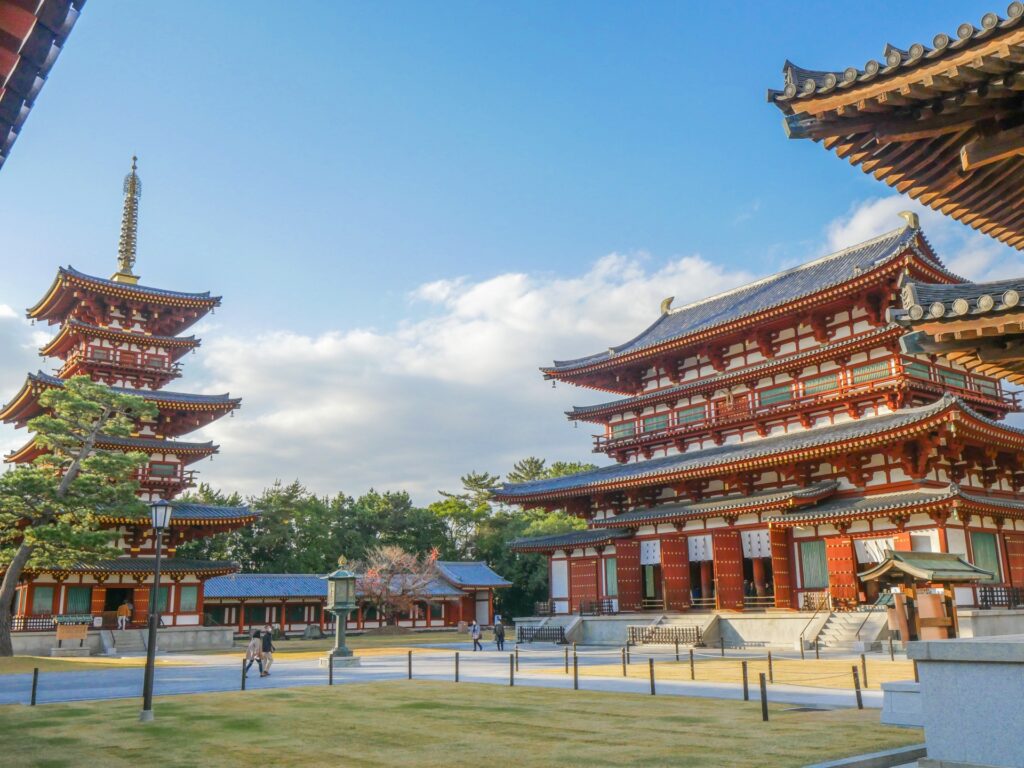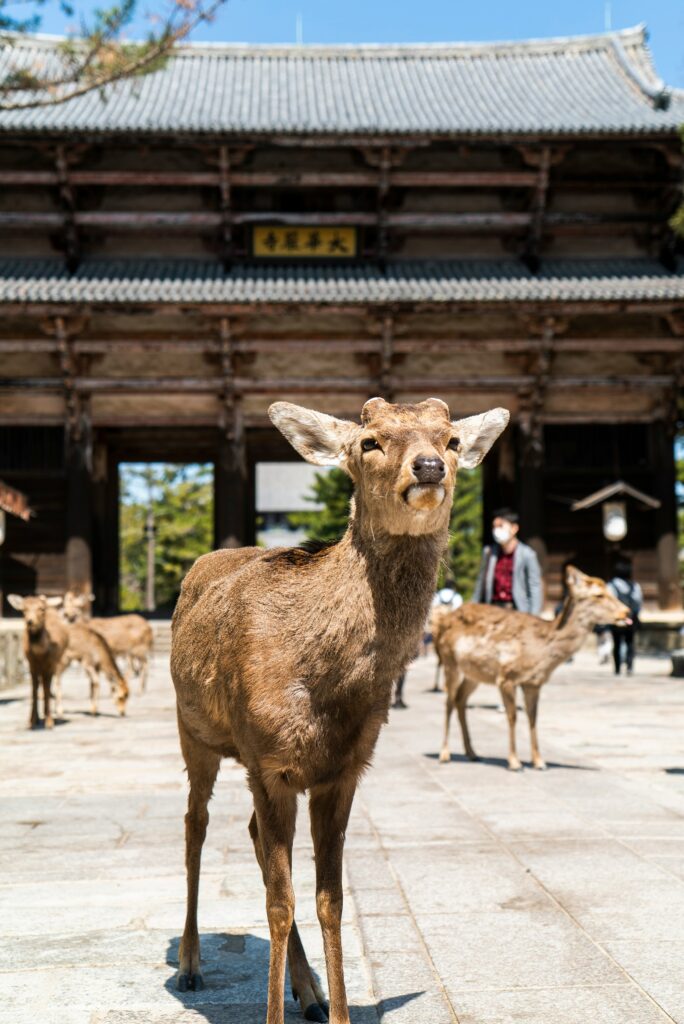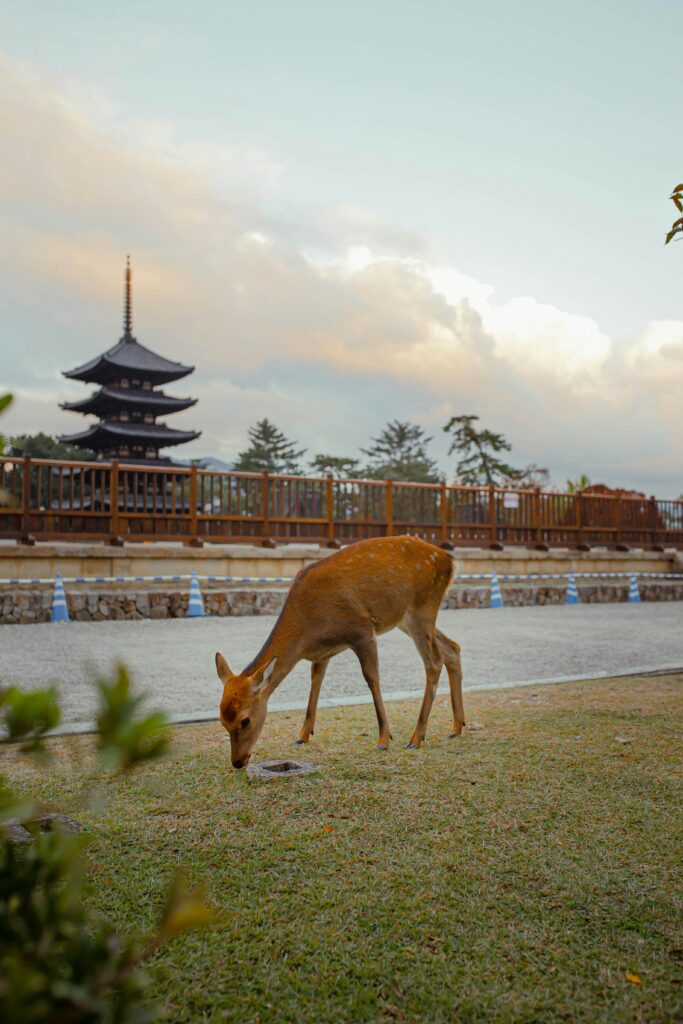Nestled in the quiet western part of Nara Prefecture, near the ruins of Heijō-kyō where fields stretch peacefully, stands Yakushiji Temple. Unlike the bustling vibrancy of Kyoto or Osaka, this place carries a deep, lingering sense of time. Emily, who lives in Los Angeles, came to visit this land quite unexpectedly.
About six months earlier, she had faced a string of setbacks—her project had failed, and a close colleague had left the company. These events made her start questioning her work and the way she was living. Around that time, a university friend recommended, “Nara, the ancient capital of Japan, is the perfect place to find some peace of mind.” Normally not the type to seek out sightseeing tours, those words struck a chord with her, and she decided on this solo journey.
One early summer morning, after only a few minutes’ walk from the station, Yakushiji appeared beneath a sky where white clouds drifted lazily. Its tiled roofs and wooden framework cast deep shadows in the gentle sunlight. The East and West pagodas stood facing each other, while the main hall quietly nestled between them, evoking a rhythm that felt almost musical.

“Frozen music.” Emily recalled hearing that an architectural historian once described the East Pagoda this way. Though it is a three-storied pagoda, the curved eaves of each tier and the balanced pillars created a melody seemingly paused in time. The entire structure was wooden, with barely any nails used. She could hardly believe that wood joined wood like this had withstood wind and rain for over a thousand years.

As she rested on a bench within the temple grounds, a small pamphlet suddenly fluttered down at her feet, caught by a gentle breeze. The young man sitting next to her noticed and picked it up.
“You dropped this,” he said with a calm smile, offering the pamphlet to her. His polite gesture made her smile back without thinking.
Slim and wearing black-rimmed glasses, he had an intellectual air about him. When Emily spoke English, he replied fluently.
“I’m Kenta. I work at a local IT company, but on my days off, I like visiting temples. Yakushiji is my favorite,” he said.
Slightly surprised, Emily smiled. His calm manner and his enthusiasm for history and architecture drew her in.

“Don’t you think Yakushiji’s architecture carries a hint of foreign influence beyond just being old?” Kenta smiled.
“Buddhism originally came to Japan via China from India, right? You can see traces of that journey in Yakushiji’s buildings and statues. This style is called ‘Hakuho culture,’ which blossomed when Japan was beginning to form itself as a nation. It’s elegant, understated, and speaks quietly of beauty.”
He then pointed toward the East Pagoda.
“This one is the real deal, surviving since the Nara period—almost 1,300 years old.”
His gaze rested on the gracefully proportioned tower standing quietly. Emily felt, perhaps for the first time, a sensation of prayer taking shape through architecture.
Afterwards, guided by Kenta, she walked to the nearby Tōshōdai-ji Temple. It, too, boasted a splendid temple complex rivaling Yakushiji’s, founded by the eminent Tang dynasty monk Ganjin. The breath of the Tenpyō era seemed to quietly seep from the moss-covered stone steps and wooden structures.
As they parted, Kenta said, “Places like Yakushiji remind you where your true center lies.” Those words quietly echoed in her heart.
In the afternoon, Emily visited Nara Park. Deer ambled slowly through dappled sunlight, and the majestic Great Buddha Hall of Tōdai-ji stood proudly. “You can’t miss this place,” Kenta had told her, and indeed, he was right.

Late afternoon found her dining in a small, traditional townhouse-style restaurant. The exterior featured latticed sliding doors and white noren curtains, with a calm interior filled with the scent of wood. She chose “nyūmen,” a warm somen noodle dish served in a clear broth flavored with bonito. Thin white noodles floated gently, while ginger and green onions added a fragrant touch—each sip felt like a gentle untying of her body’s tension.

For dessert, she had kuzukiri: translucent kudzu starch noodles floating in iced water, drizzled with black syrup. It was the first time she’d tasted such a refreshingly delicate sweet.

Back at her inn that night, stars twinkled outside her window. Away from the city’s noise, she reflected on the day spent in the tranquil ancient capital. It wasn’t just the beauty of the buildings, but the prayers and feelings they held, and the people who still carry those traditions today.
Emily recalled the value of “stillness” that she had almost lost amid her busy life. This trip taught her the beauty of simply being. She closed her eyes gently and silently vowed to return to Japan again.
Something New Travel

